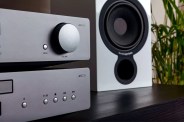If you’ve ever plugged a pair of headphones into a phone or computer to listen to your favorite tunes, you have a digital-to-analog converter (DAC) to thank. Often mentioned in the same breath as an “amplifier,” both work directly with each other in order for you to listen to digital music files from services like Spotify, Apple Music, iTunes or Tidal, on your headphones or speakers.
But why do you need a gadget to convert digital to analog anyway, and why do companies sell seperate DACs you can use instead of the one that’s already in your gadget?
The signals your audio devices make, whether they are digital or analog, aren’t really fit for listening. These faint electrical messages are primarily a way to transmit data from one component to another, whether that’s from a phono cartridge to a speaker, or a hard drive to a pair of headphones. Amplifiers are crank up analog signals to a magnitude that they can actually come out of your headphones or speakers at a reasonable volume.
But amps can only work their magic on analog signals. The DAC’s job is to convert the digital signal (the ones and zeroes that make up your digital device’s internal thoughts) and convert them into an analog signal that the amplifier can supercharge by adjusting the electrical characteristics of that signal in ways that only work in analog. Yes, this means if you’re not listening to a digital source, there’s no need for your system to have a DAC.
Most manufacturers combine headphone amps and DACs into one component. For example, Schiit Audio’s Fulla 3 ($99) and Audioengine’s D1 ($169) both combine an amp and DAC into one component that’s designed to boost your computer’s audio. In the smartphone audio realm, AudioQuest’s DragonFly Series of headphone amplifiers-and-DACs are some of our favorites.


